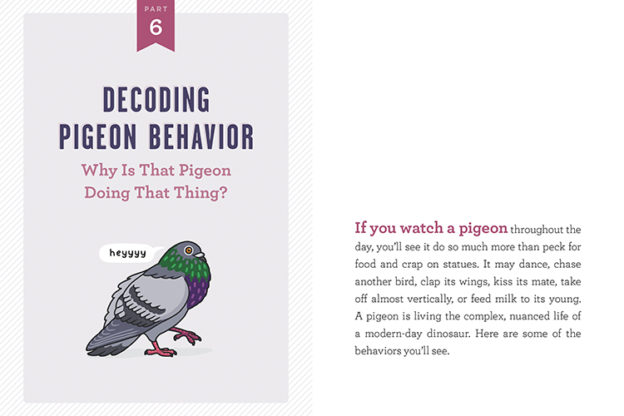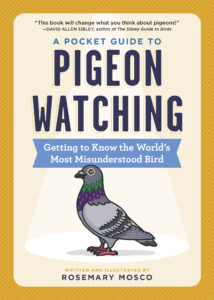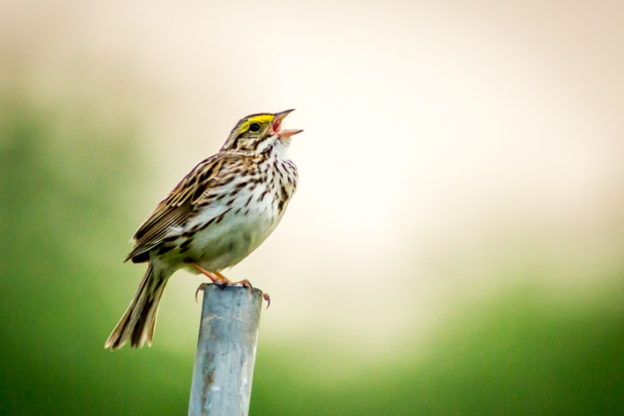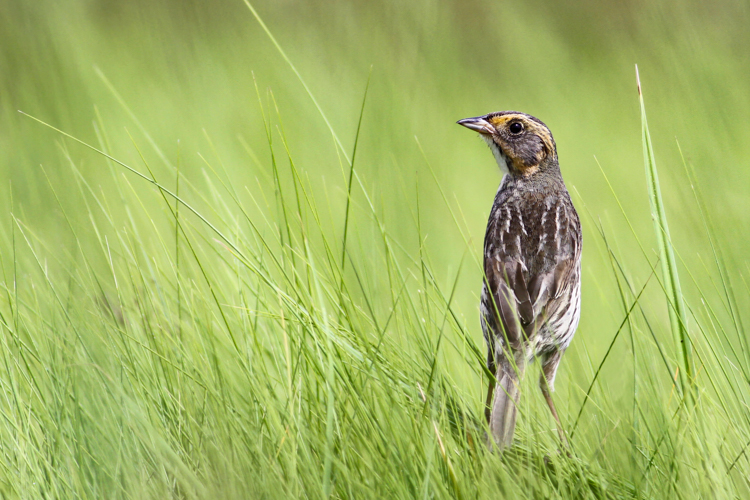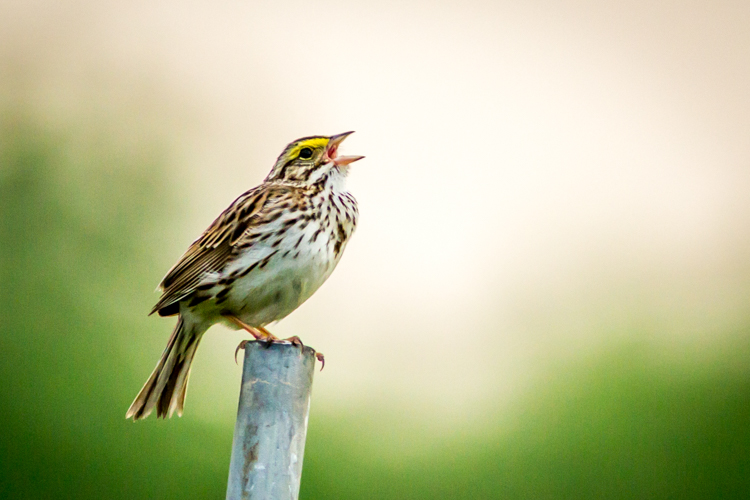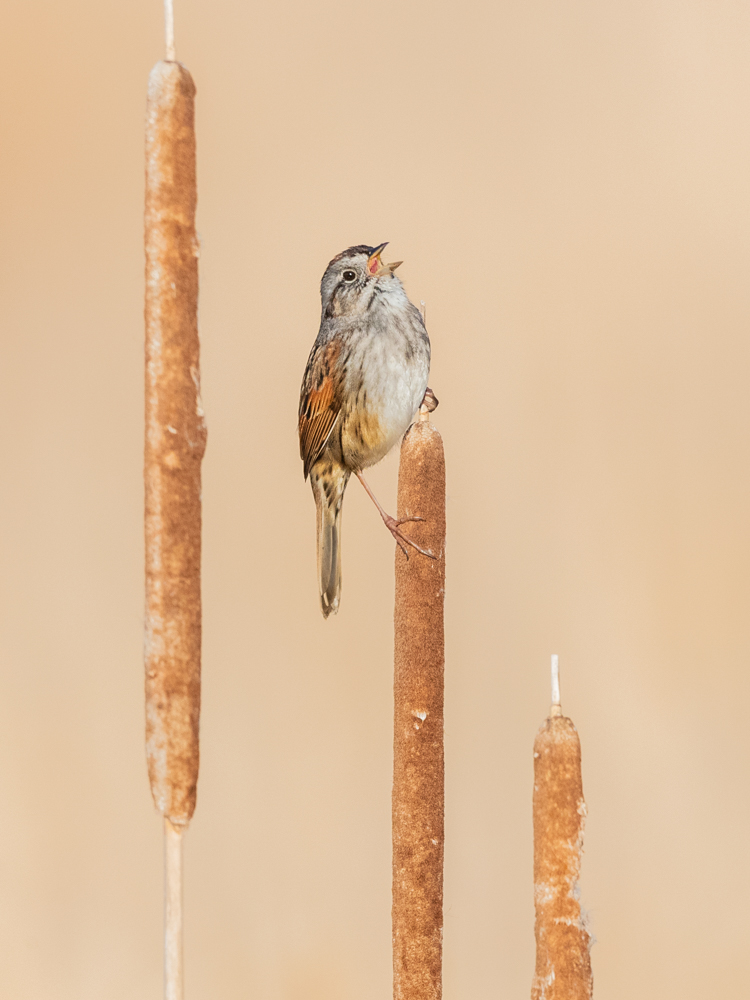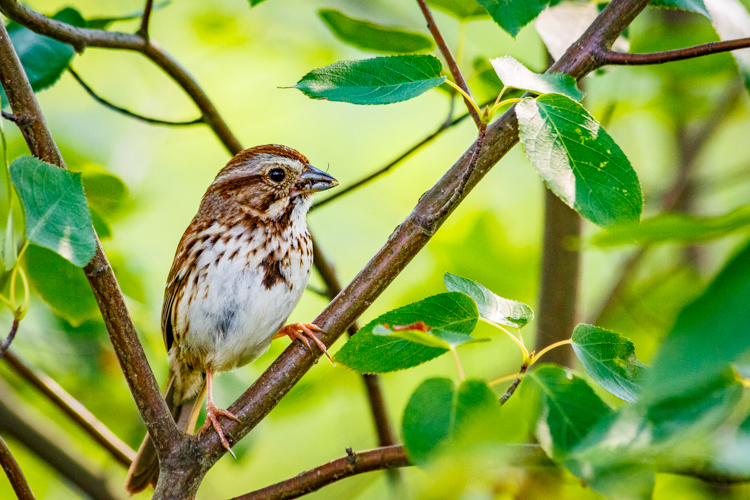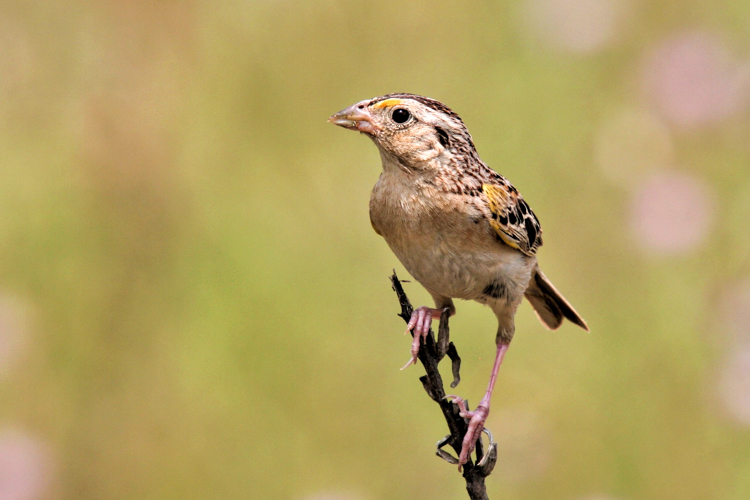We all love birdwatching, but—pigeons? Who cares about pigeons? Rosemary Mosco, the creator of the nature comic Bird and Moon (and Mass Audubon alum), has a new book out that explains why these ubiquitous city birds deserve a second look. It’s called A Pocket Guide to Pigeon Watching: Getting to Know the World’s Most Misunderstood Bird.
Here, Rosemary shares some of the most frequent questions she gets asked about pigeons.
Why should I care about pigeons?
Our aloof attitude towards pigeons is a new thing. For much of human history, people loved them. Native to parts of northern Africa, Europe, and western Asia, rock pigeons (Columba livia) were domesticated in the Middle East by least four or five thousand years ago.
People used them for meat, for poop (a potent fertilizer), and to carry important messages. Pigeon fans developed all sorts of amazing and fancy breeds, just as with dogs and cats. The birds became a symbol of peace and love, and in some places, only elites were allowed to keep them.
Colonists brought them to North America in the 1600s. But over time, pigeons became obsolete with the introduction of chicken meat, chemical fertilizer, the telegraph. People began to forget why there were pigeons everywhere. It’s a sad tale—feral pigeons are just like feral dogs and cats, but we’ve forgotten why they’re here!
Okay, but why should I watch pigeons?
They’re surprisingly fun to watch! They mate for life and dance for their partners. They feed milk to their young—both male and female pigeons make a rich, fatty milk in their throats and puke it into their chicks’ mouths. Pigeons come in a mix of cool colors because of their purebred past.
Also, watching them can help you find hard-to-spot birds of prey. Peregrine falcons, Cooper’s hawks, red-tailed hawks, and all sorts of other birds prey on pigeons. If you see a flock of pigeons burst into the air, scan the skies for a raptor.
What’s the difference between a pigeon and a dove?
There’s no real difference. The beautiful white symbol of peace is the same as the city pigeon. Pigeons and doves belong to the scientific family Columbidae. It’s a big, amazing family full of beautiful members such as the mourning dove, Nicobar pigeon, and dodo.
Within that family, people randomly named some birds “pigeons” and some birds “doves,” regardless of who’s related to whom. But wait, why do we have two English words for the same thing? It might date back to the Norman conquest of England in 1066. The word “pigeon” comes from French and the word “dove” has Old English roots.
Do pigeons harm the environment?
They certainly annoy people when they poop on statues or nest on our balconies. Pigeons are now a major part of the urban ecosystem, but for the most part they don’t have a huge impact on wild spaces. They tend to stay near human settlements—that’s what people bred them to do!
There are exceptions, though. In the Galapagos, for example, pigeons were exterminated so they wouldn’t spread disease to the rare native Galapagos dove.
Why do I never see baby pigeons?
In their wild past, pigeons nested in cavities in cliffs. In urban areas, they nest in crevices in buildings or under bridges. Babies don’t emerge from these safe places until they’re old enough that they look a lot like their parents—just with duller plumage and paler eyes.
You may not ever see pigeon chicks (which is a shame, because they’re gangly, fluffy, and amazing-looking). You’ll hear them, though. They make a high-pitched whistling noise. Listen for that sound when you’re walking around the city or under a bridge.


